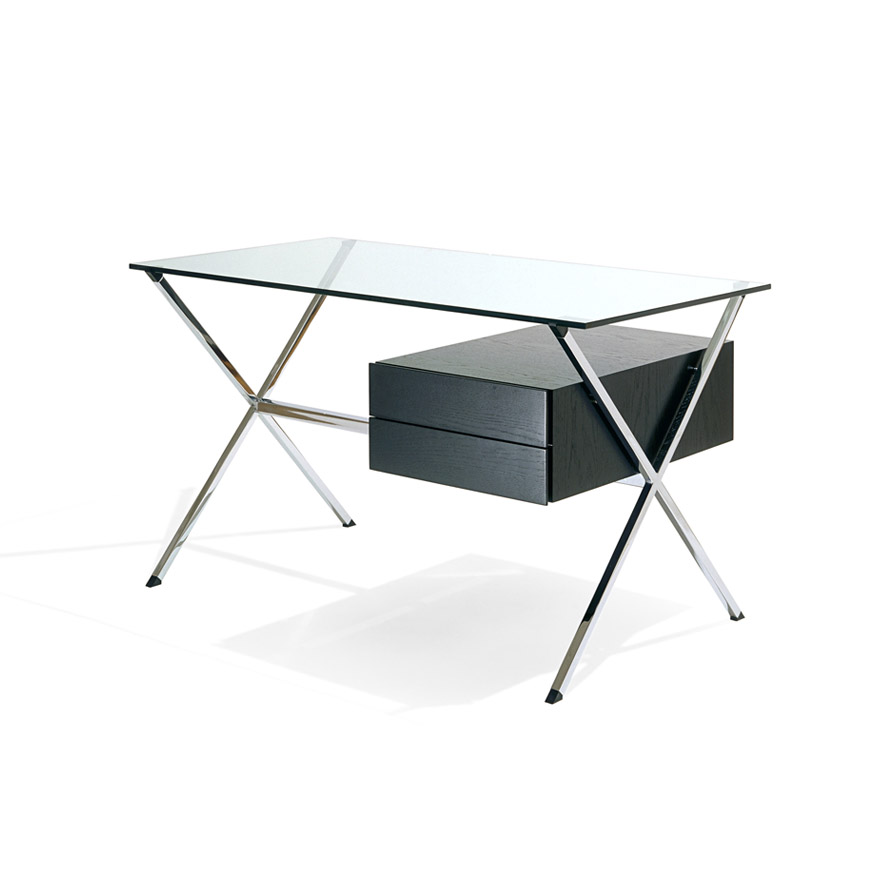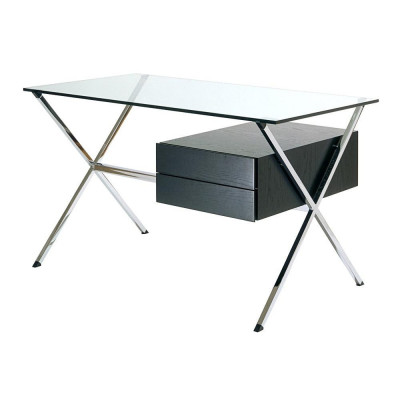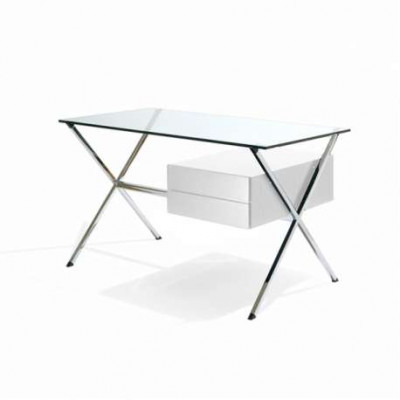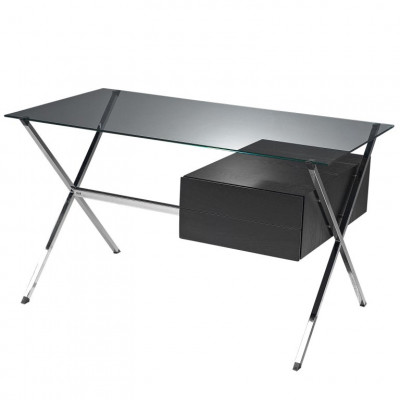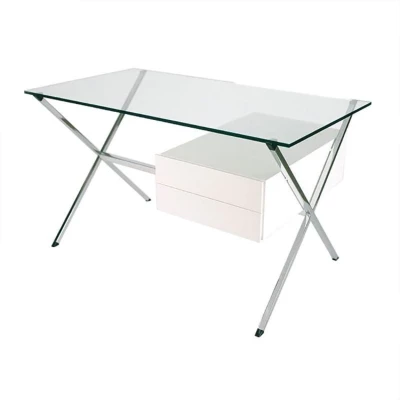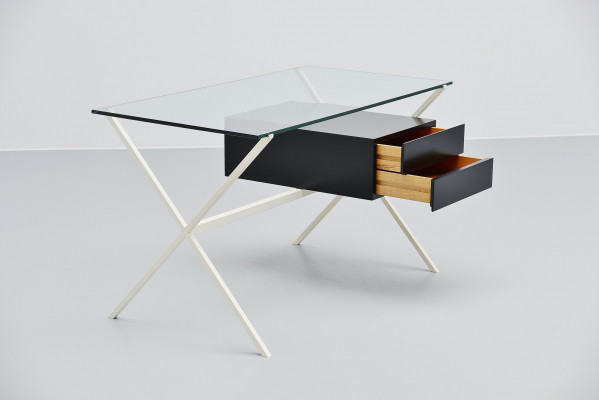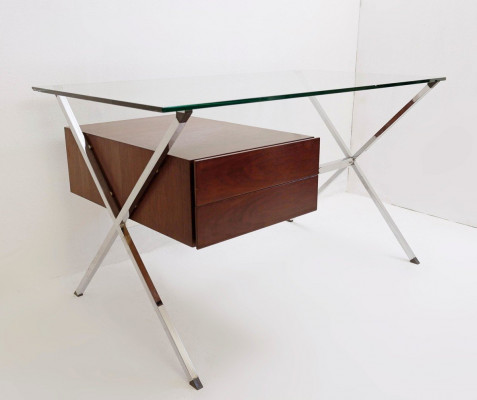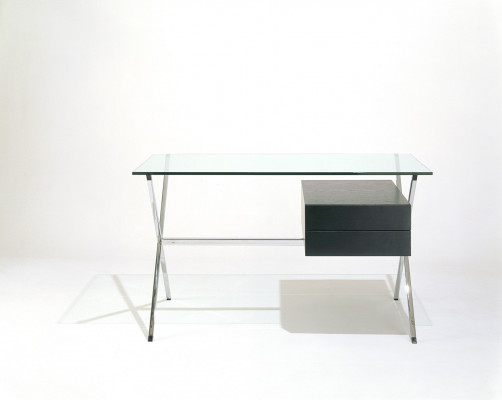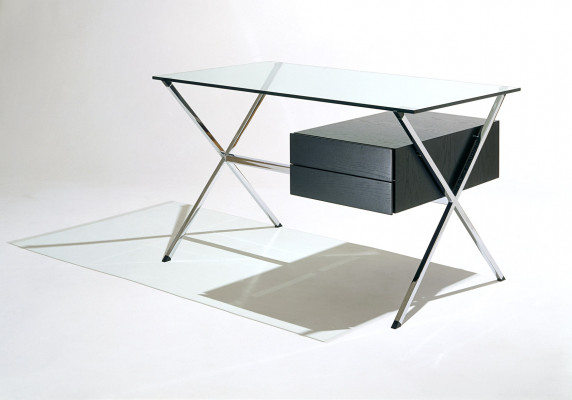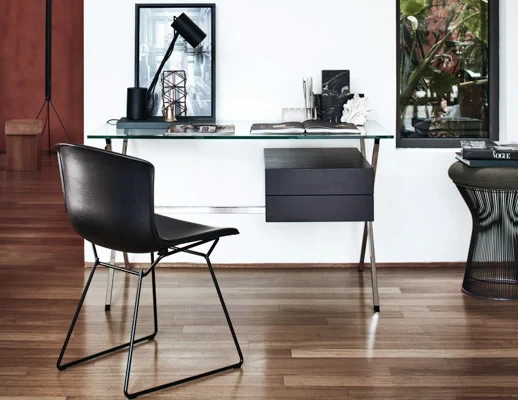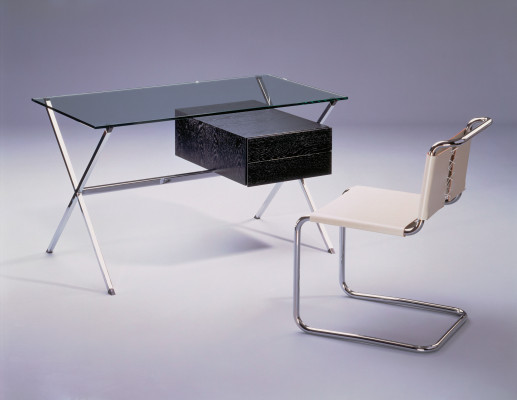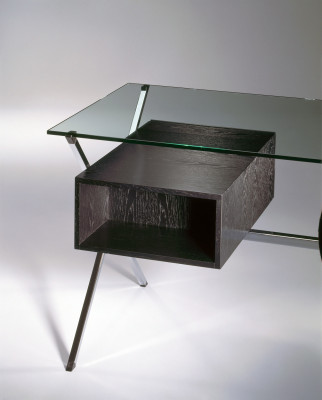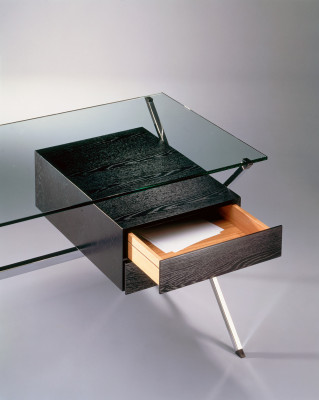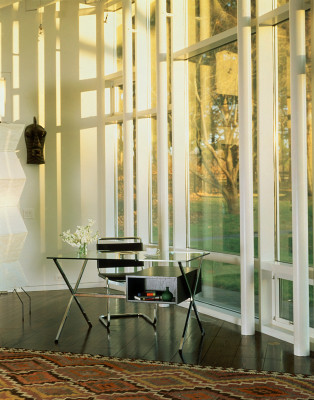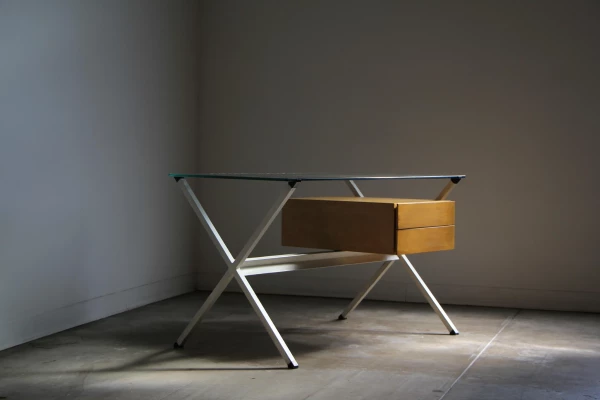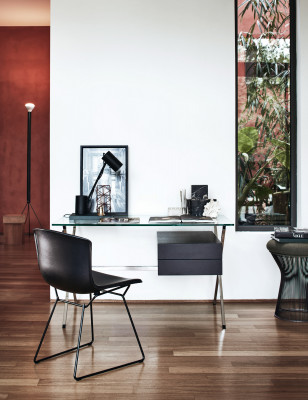Basic information
Albini Desk Knoll
Designed by Franco Albini in 1928.
After graduating in architecture at Milan Politecnico, Franco Albini worked simultaneously in fields of furniture, product design, architecture, urban planning and interior design. His sentiments as a rationalist architect translated into remarkably transparent furniture designs, which display a knowledgeable use of materials while presenting their internal structure and processes of production. Franco Albini’s 1928 desk combines glass, steel and wood with striking clarity and balance. A clear demonstration of Albini’s rationalist design philosophy and minimalist aesthetic, the design derives its appeal through simplicity of form and celebration of material, without extraneous ornamentation. The desk's design demonstrates Albini's commitment to rigorous craftsmanship and elegance built on a minimalist aesthetic.
Two-drawer pedestal available in ebonised oak or white lacquer. Frame and legs in square steel tube with chrome finish.
Two-drawer pedestal available in ebonised oak or white lacquer. Frame and legs in square steel tube with chrome finish.


